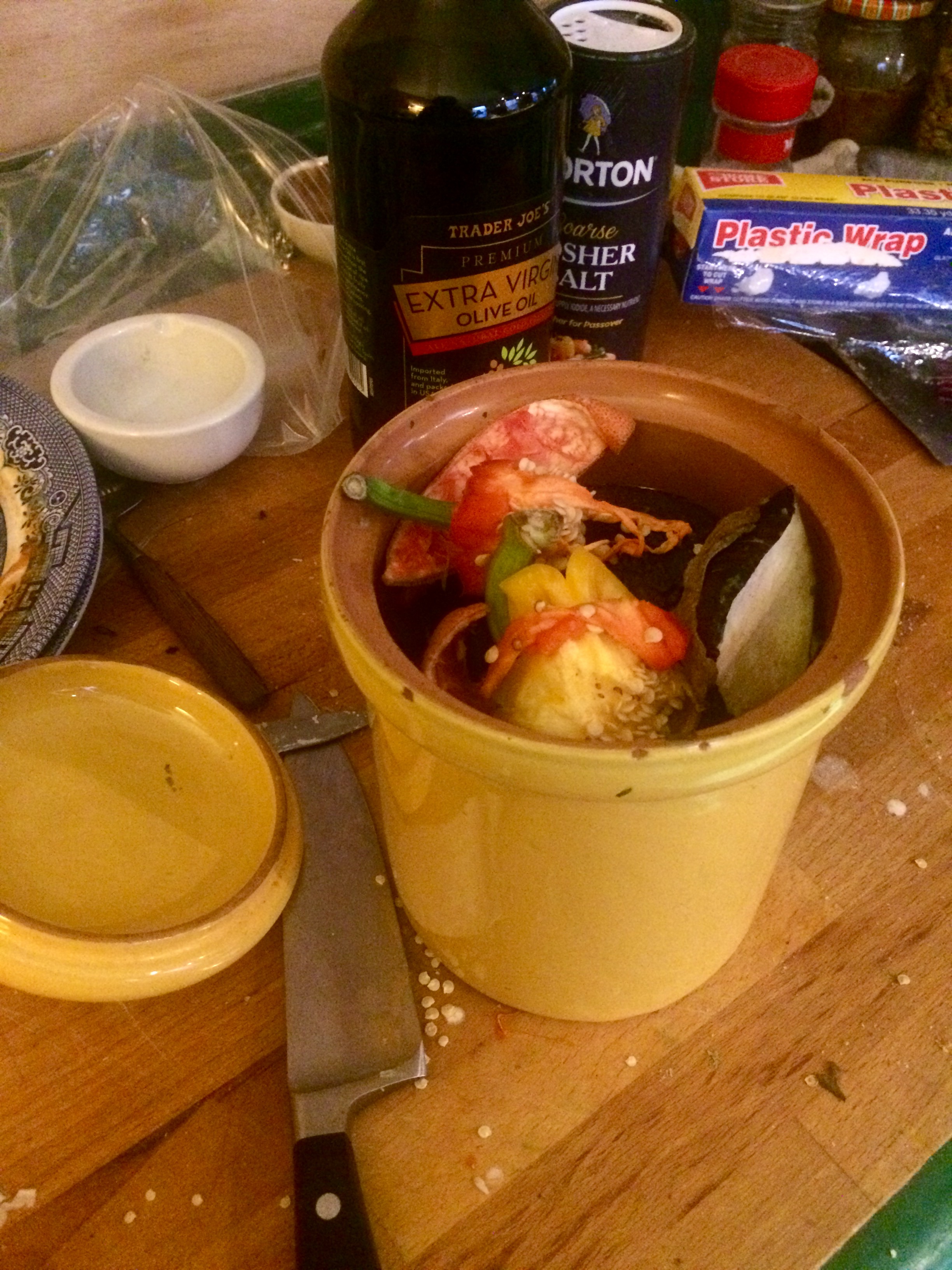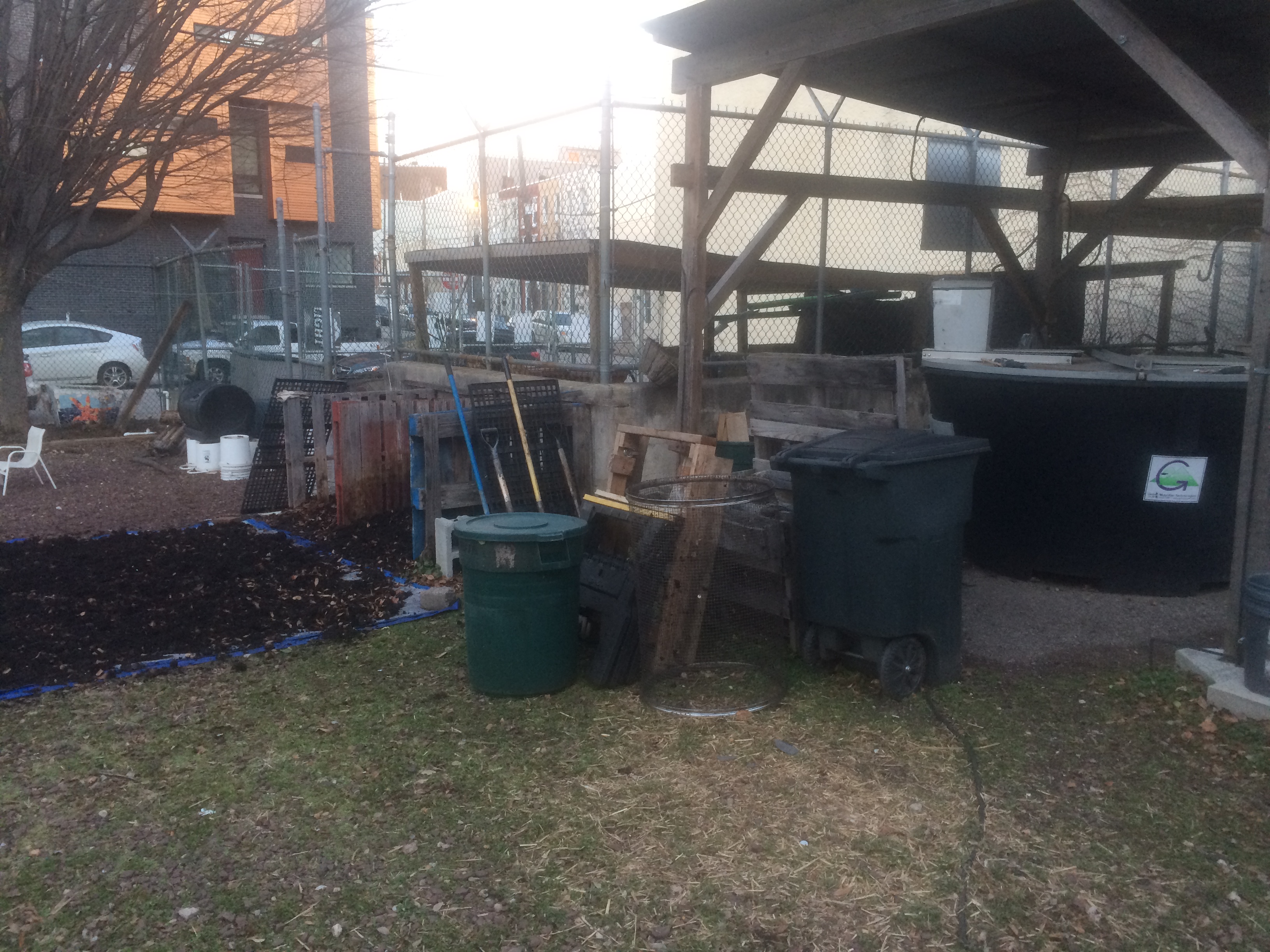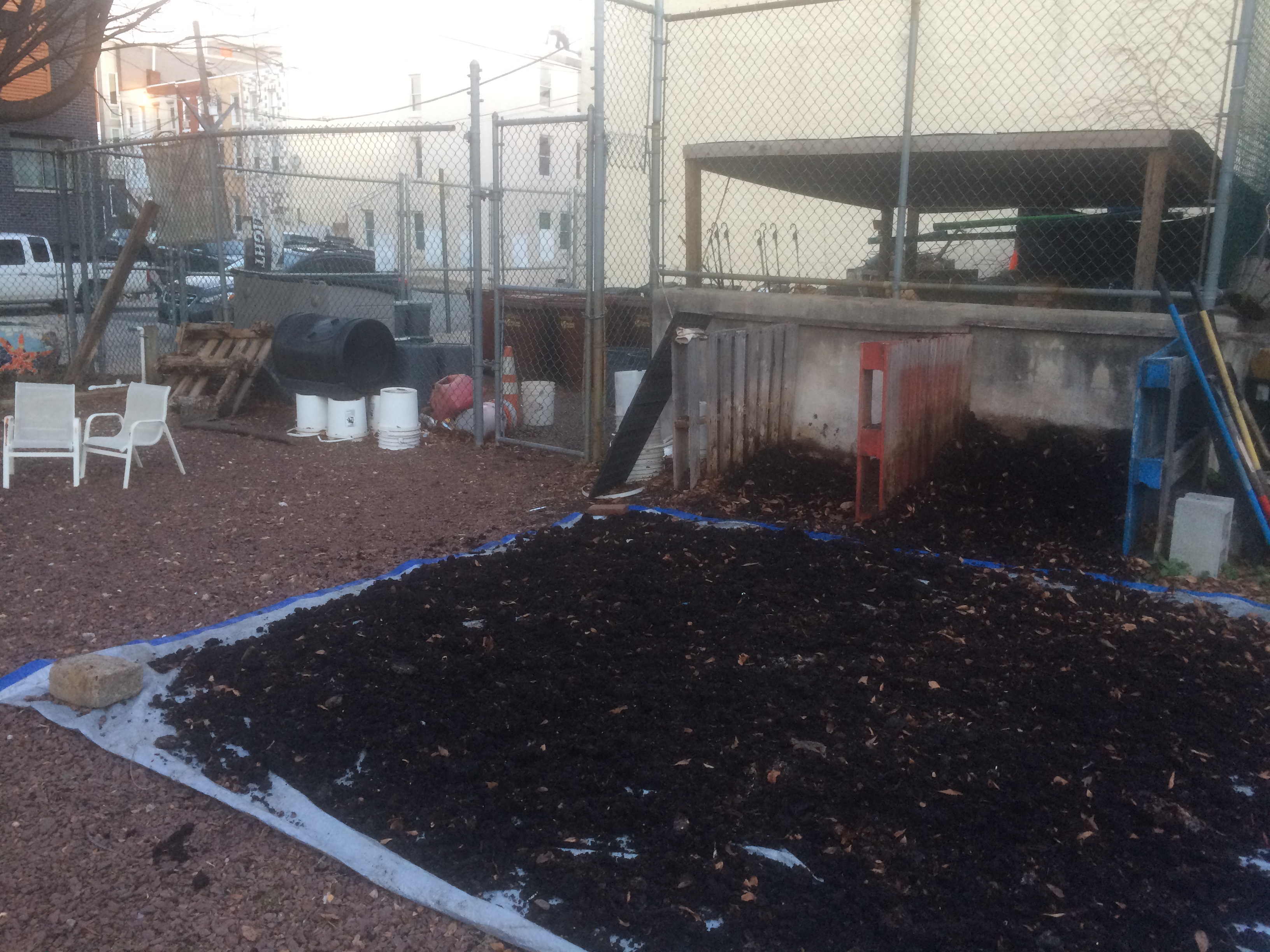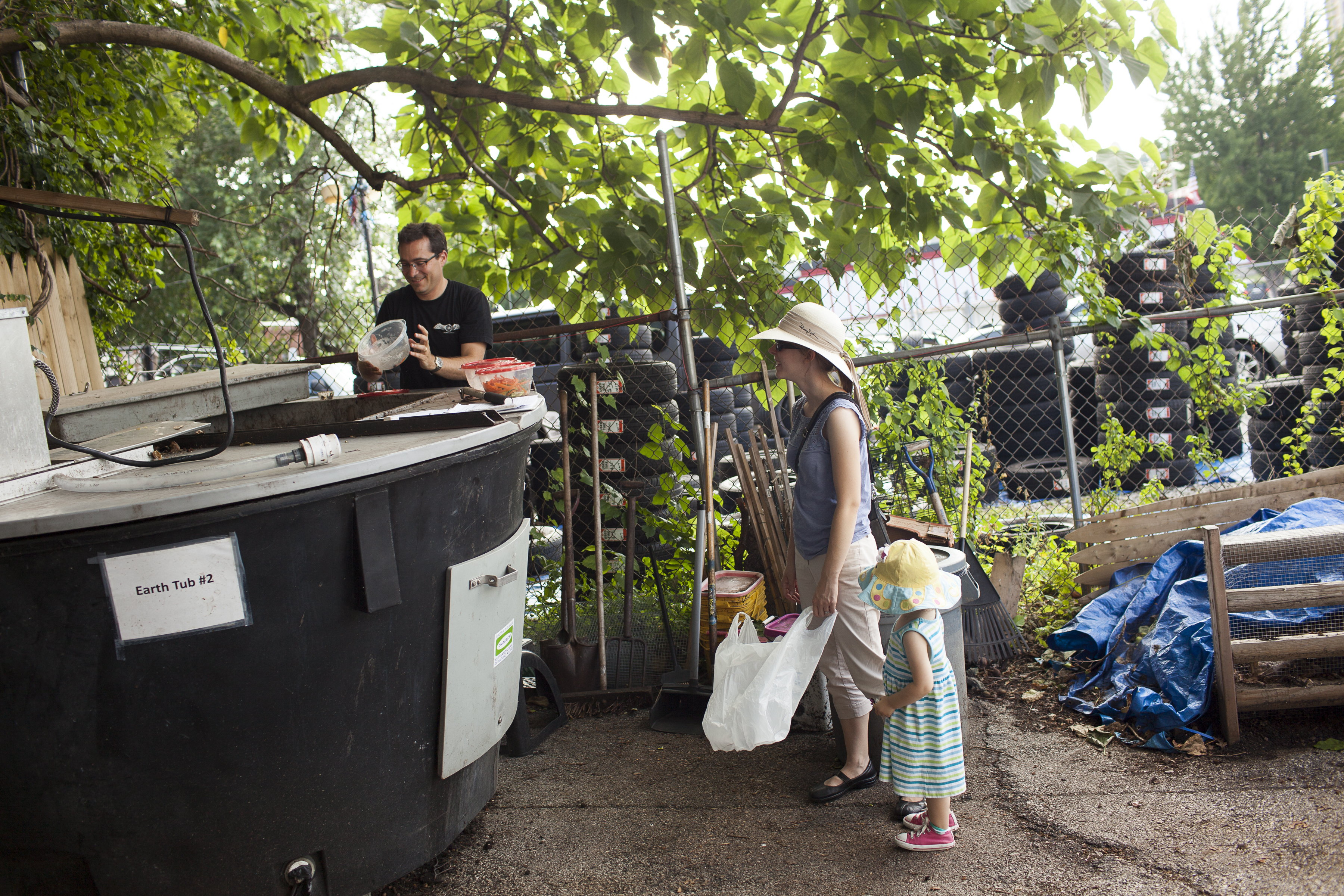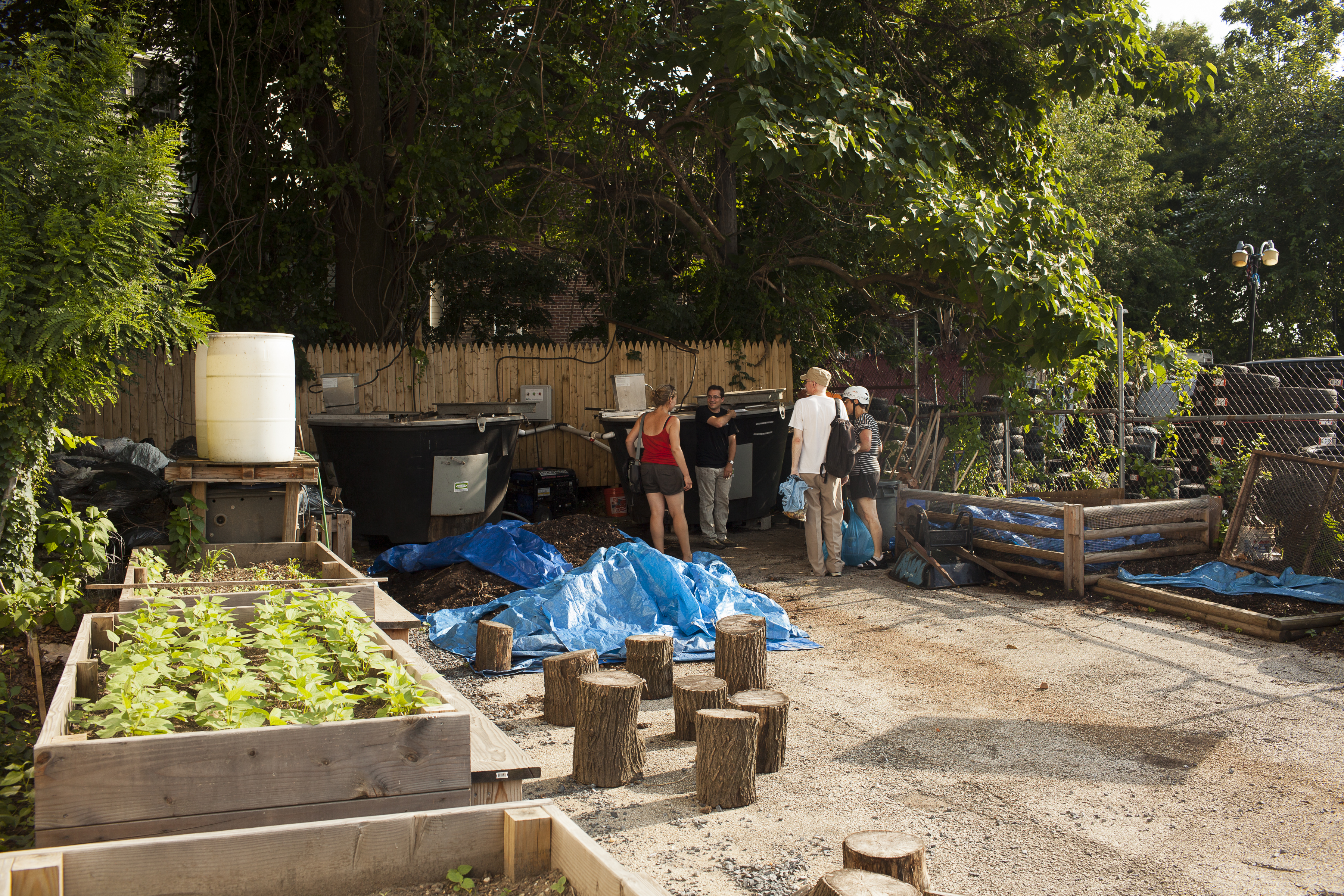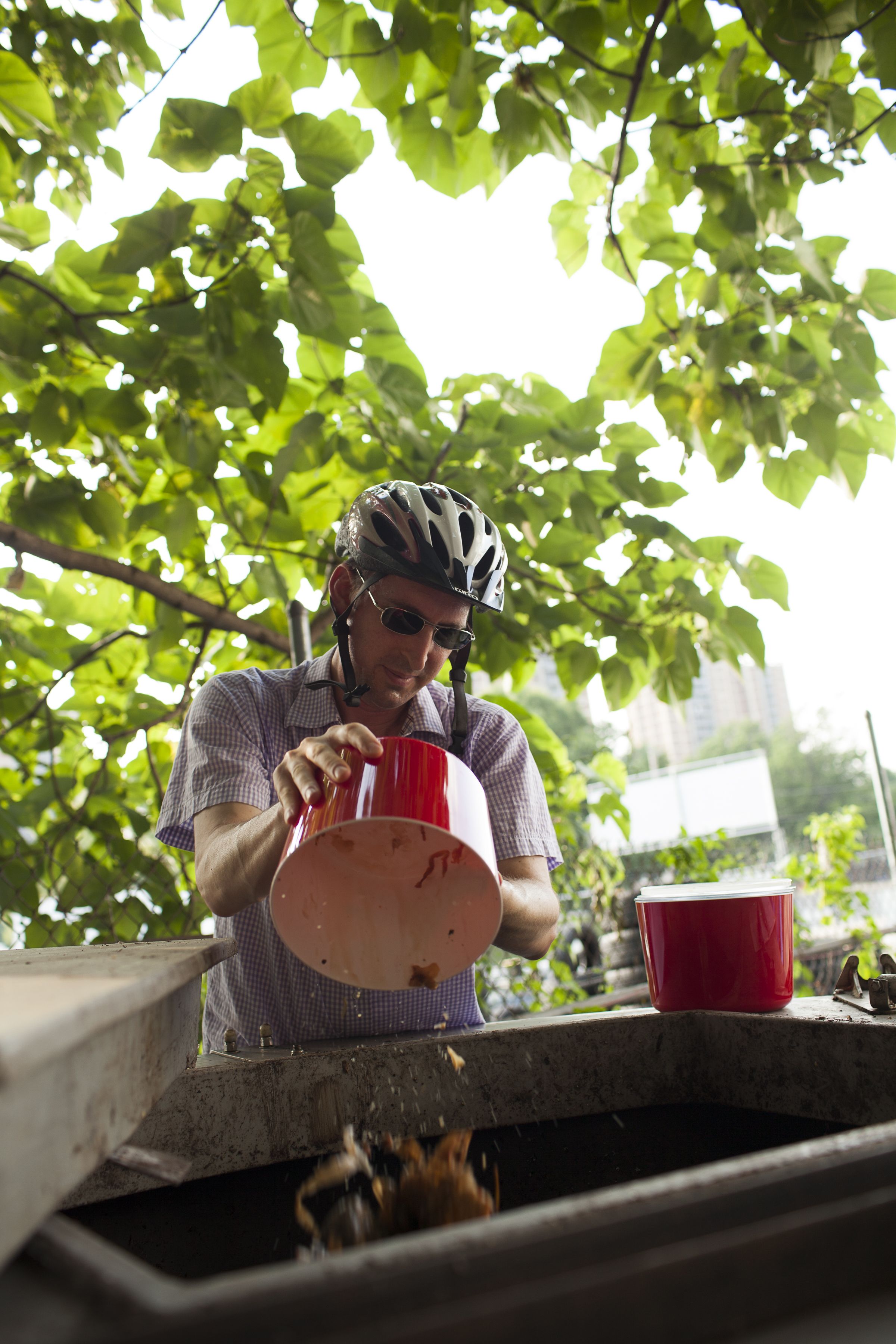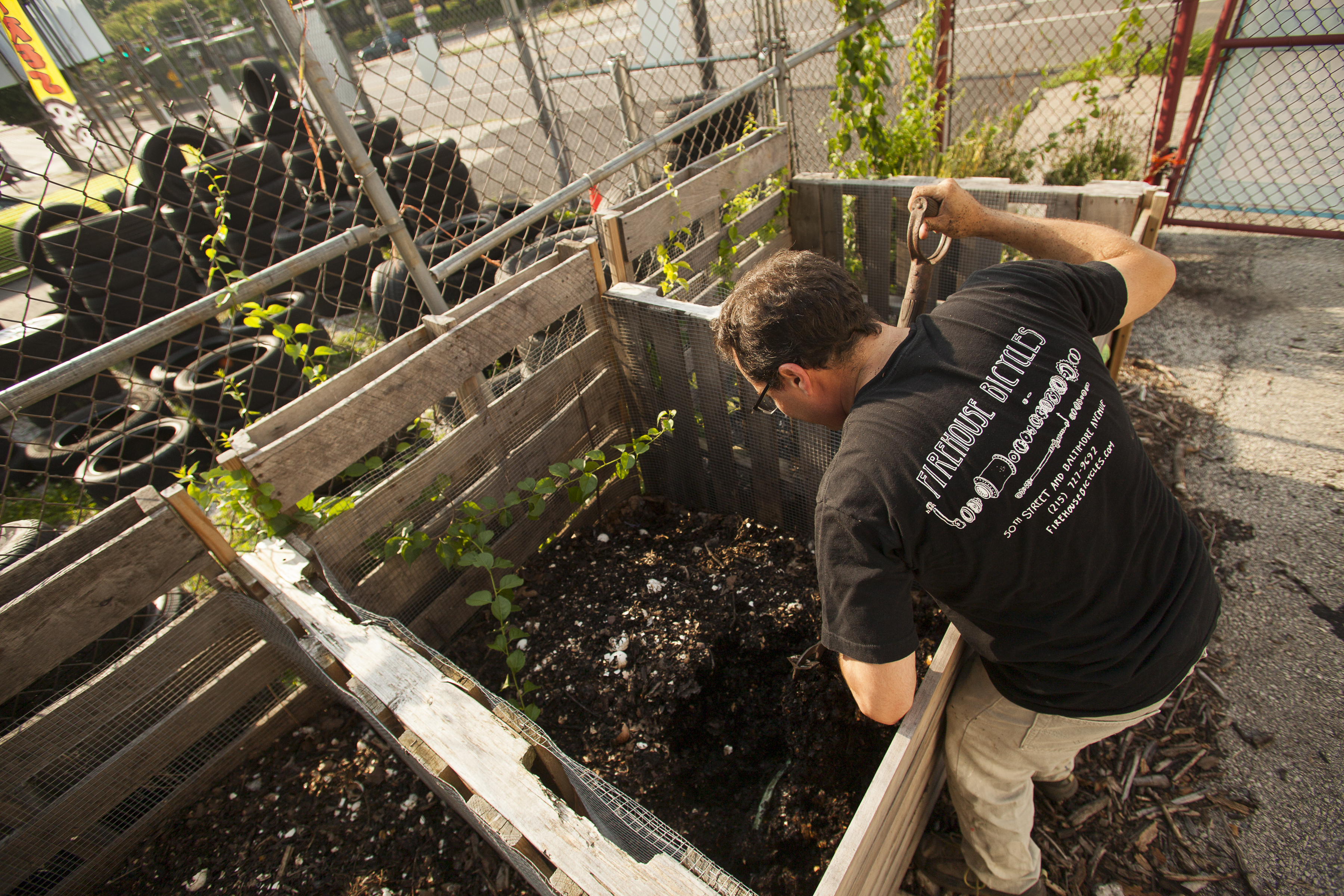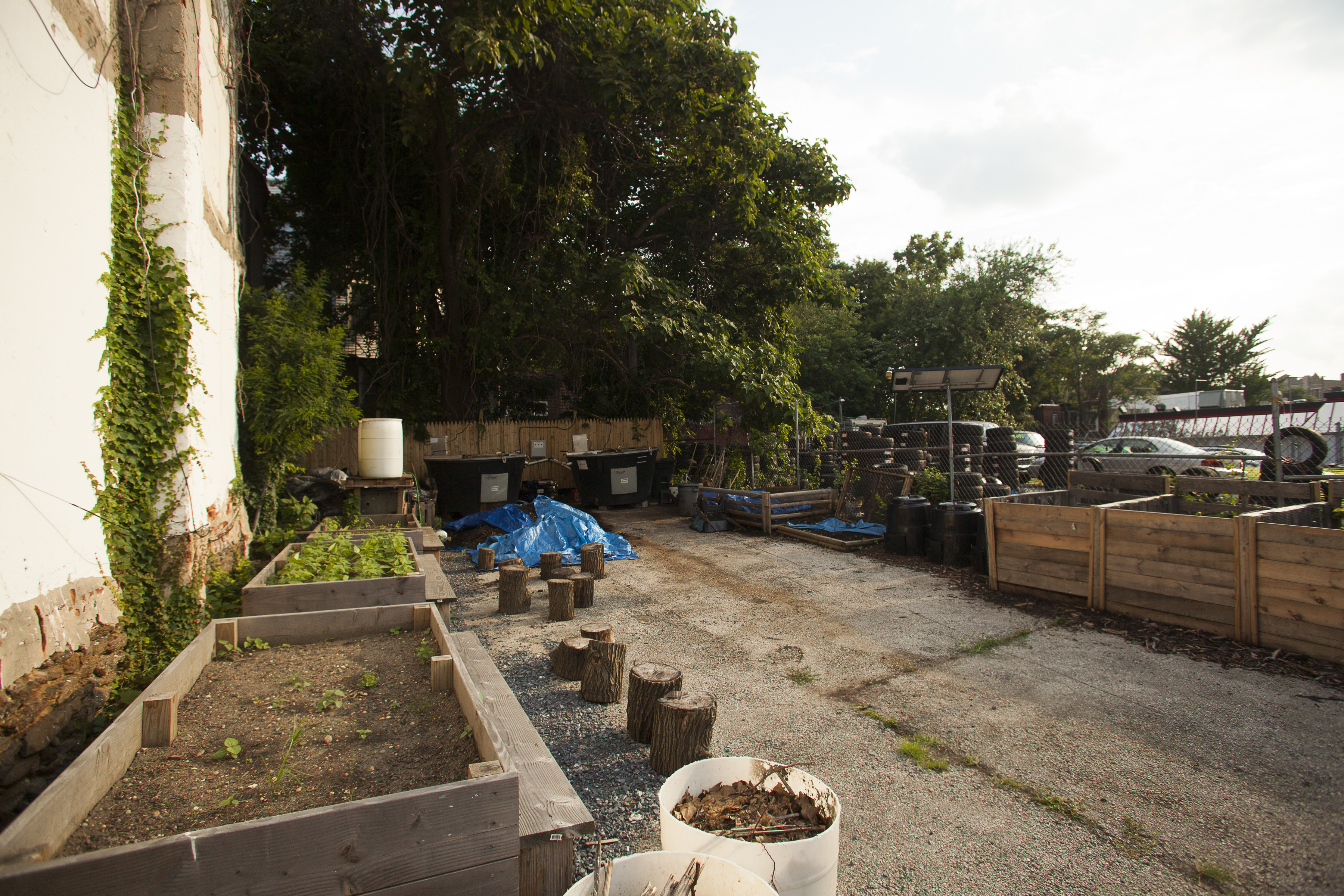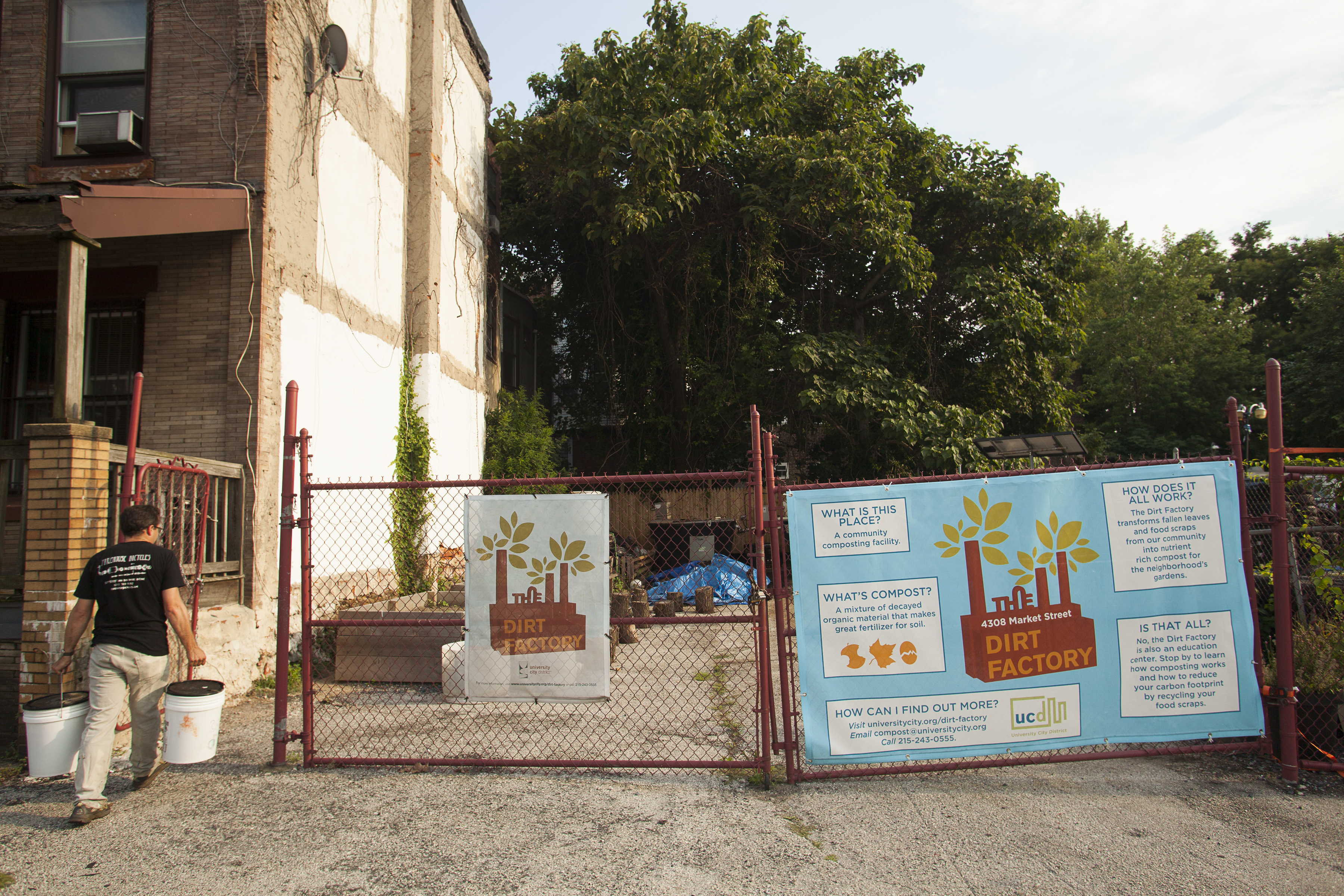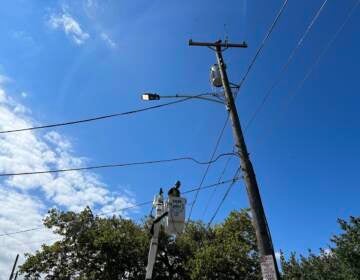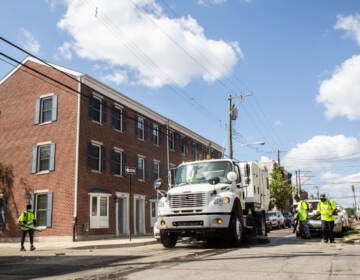Composting in Philadelphia: Where we are and where we are going
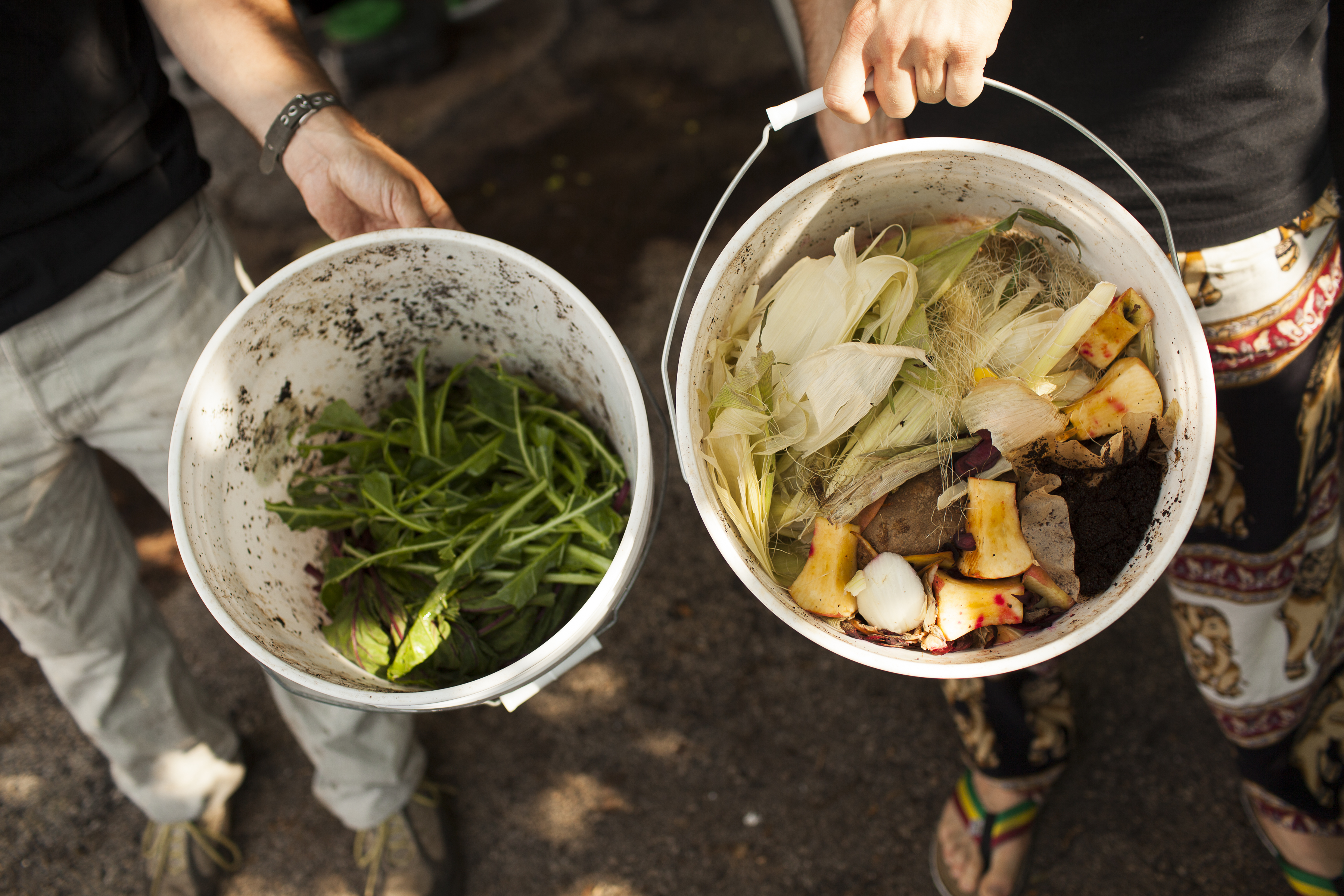
Philadelphia has set a goal to become a Zero Waste city by 2035. Throughout 2017, PlanPhilly will report on ways the city is working toward that goal by looking at the potential found in the waste stream – from compost to cogeneration, recycling to gleaning.
The Zero Waste and Litter Cabinet recently created by mayor Jim Kenney has until just July 1st to prepare a comprehensive plan to reduce the amount of waste that ends up in landfills and incinerators 90 percent by 2035.
Cabinet members and waste management stakeholders are excited and optimistic. After working with the city on waste management and recycling since 1985, Maurice M. Sampson II said he was surprised to hear the cabinet’s zero waste plan.
“I’m still not sure [if] I was dreaming,” Sampson said after the cabinet’s first meeting on January 19th.
Currently, the City of Philadelphia diverts approximately 21 percent of the 623,474 tons of waste it collects a year, said Scott McGrath, director of environmental services at Philadelphia’s Streets Department. If you include private collection, the diversion rate goes up to 38 percent.
Getting to 90 percent in less than 20 years is not going to be easy, local experts interviewed for this story said, and it will require multiple strategies and behavioral changes. But all agreed that diverting more organic matter—recycling and composting grass, leaves, and food waste—will be key.
“Setting a zero waste goal without having organic diversion is inconceivable,” said Nic Esposito, Zero Waste and Litter Director at the Managing Director’s office. “So, at least by 2035, we’ll have organics collection in the city of Philadelphia, if we stick to our plan.”
The most recent waste composition study of city-collected waste stream, conducted in 2010, estimated that 12 percent of our garbage are leafs and yard waste, and 13 percent are food and other organics.
“Organics is a very hot item on our agenda [for] studying how to get to zero waste,” Streets Department Commissioner Carlton Williams told PlanPhilly.
By summer, the department will release a study evaluating the feasibility of collecting residential organics in addition to trash and recycling. The study will look at the resources already available, Williams said, and recommend actions needed to collect and accept organic material.
Philadelphia used to have an unusual organic curbside collection from the 1930s until sometime during the 1990s. Pig farmers from New Jersey would come to the city twice a week and collect buckets full of food scraps to feed their pigs. In 1991, they collected 30,000 tons and saved the City $1.9 millions in landfill fees. The program was discontinued, McGrath said because the cost per ton for pick-up became too expensive. Some years later, most of the farms closed due to development pressures in South Jersey.
Today, municipal organic collection is not possible mainly because there are no composting facilities in Philadelphia with the capacity to accept tons of food waste. Some organic waste was being sent to a facility in Wilmington, Delaware. But the facility closed in 2014 due to code violations and odor.
According to Streets, an average household in Philadelphia throws away 20 pounds of food waste a month. Every ton diverted from landfill saves the city $40 in tipping, or disposal, fees. Sending food to the landfill is not only expensive, it also releases methane into the atmosphere. And composting advocates say it’s just not very smart: food waste can be recycled, creating jobs and revenue.
Organic diversion panorama in Philadelphia
Even though Philadelphia doesn’t collect compost at the municipal level, there are a number of initiatives and companies dealing with organic diversion.
Streets Department provides leaf collection and drop-off points during the Fall and picks up Christmas trees in January. About 2,000 tons of organic per year are taken to the Fairmount Park Organic Recycling Center, which also receives organic waste from residents and commercial business. In 2014, the center received 3,696 tons of leaves, grass clippings, wood, brush, and manure.
The Philadelphia Water Department also recycles food waste, turning it into energy and fertilizer. Garbage disposals can take any food waste (except fats, oils, and grease) into the sewer system to wastewater treatment plants with anaerobic digesters. Through a biological process, microorganisms break down organics releasing biogas, later transformed into electricity and heat at the Philadelphia’s Biogas Cogeneration facility. The rest of the solids get transformed into pellets, used as fertilizer or fuel.
That’s why the city has been promoting in-sink food waste disposers since 2012. Clean Kitchen, Green Community, a pilot project launched that year, installed 173 garbage disposals. A year later, 86 percent of the households reduced their trash in average from 2.4 to 1.5 bags, reducing their food waste by 34 percent. If all Philadelphia houses had garbage disposals, the Water Department estimates residential food waste would go down by 19,000 tons annually, saving the city $1.1 million per year.
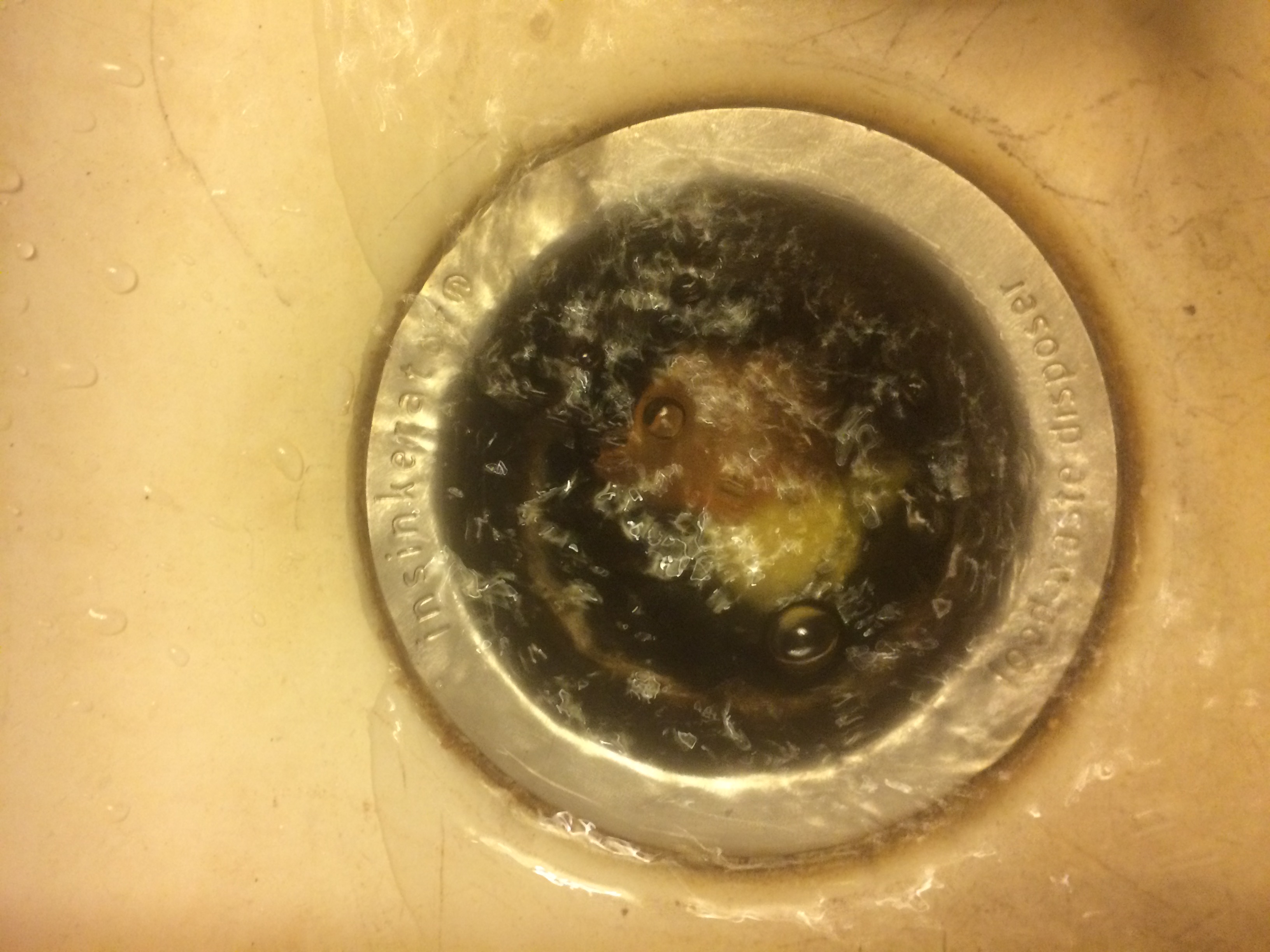
Since January 2016, newly constructed residential buildings in Philadelphia must have a food waste grinder, by law. For commercial properties, what’s known as the “dumpster bill” prohibits businesses from mixing food waste with non-recyclable waste. Business owners are required to dispose food waste in garbage disposals or arrange for private collection for composting, anaerobic digestion, or use as farm livestock feed.
Paul Kohl, acting director of Planning and Research at the Water Department, says garbage disposals are a great solution because they use existing infrastructure.
“Food is 70 percent water, on average, so if you grind up food it just flows with the water,” Kohl said. “If you take that food and put it in a truck, that truck will drive around the city, and that truck doesn’t separate the solids from the water, so two-thirds of your weight is water.”
Although he supports municipal composting collection, Kohl said it would mean extra investment in trucks and employees. And that garbage disposal is a good alternative solution for people who can’t compost.
The city’s only compost program is in the Department of Prisons. Two of Philadelphia’s six prisons started separating their food waste in 2011 and created a compost system on site. Laura Cassidy, sustainability manager of the department and creator of the program, estimates this saves the city over $25,000 in landfill fees per year, based on an average 1.4 pounds food waste generation per inmate, per day, and a $63 per ton average tipping fee. The compost is then donated to community gardens or used in the prison’s own two-acre orchard.
“Some people find it stinky and messy, but when they see the final product they’re amazed,” Cassidy said. “I’m still amazed when I see it: it’s like black gold.”
The road to curbside compost collection
Municipal compost collection won’t happen fast, local waste management experts agree, but it will happen.
To get there, Philadelphia needs the capacity to accept much more food waste. Street’s department commissioner Carlton Williams said they’re evaluating how much more the Fairmount Park Recycling Center and the Water Department’s plants could accept. They’re also identifying the necessary policy shifts to accept organics, and what would it take to build a large-scale organic facility in Philadelphia.
“Philly should definitely have multiple compost sites within its borders,” said Ned Foley, a lawyer-turned-farmer who is now a compost industry leader. Having multiple sites “is the key concept to avoid the Delaware situation [closure of Wilmington plant],” said Foley. “Decentralized medium scale operations coupled with good management practices and good technology is the recipe for success in the community.”
Foley’s American BioSoils & Compost collects 2,500,000 pounds of food and yard waste per month from the eastern half of Pennsylvania, converting it into 50,000 cubic yards of soil in a year.
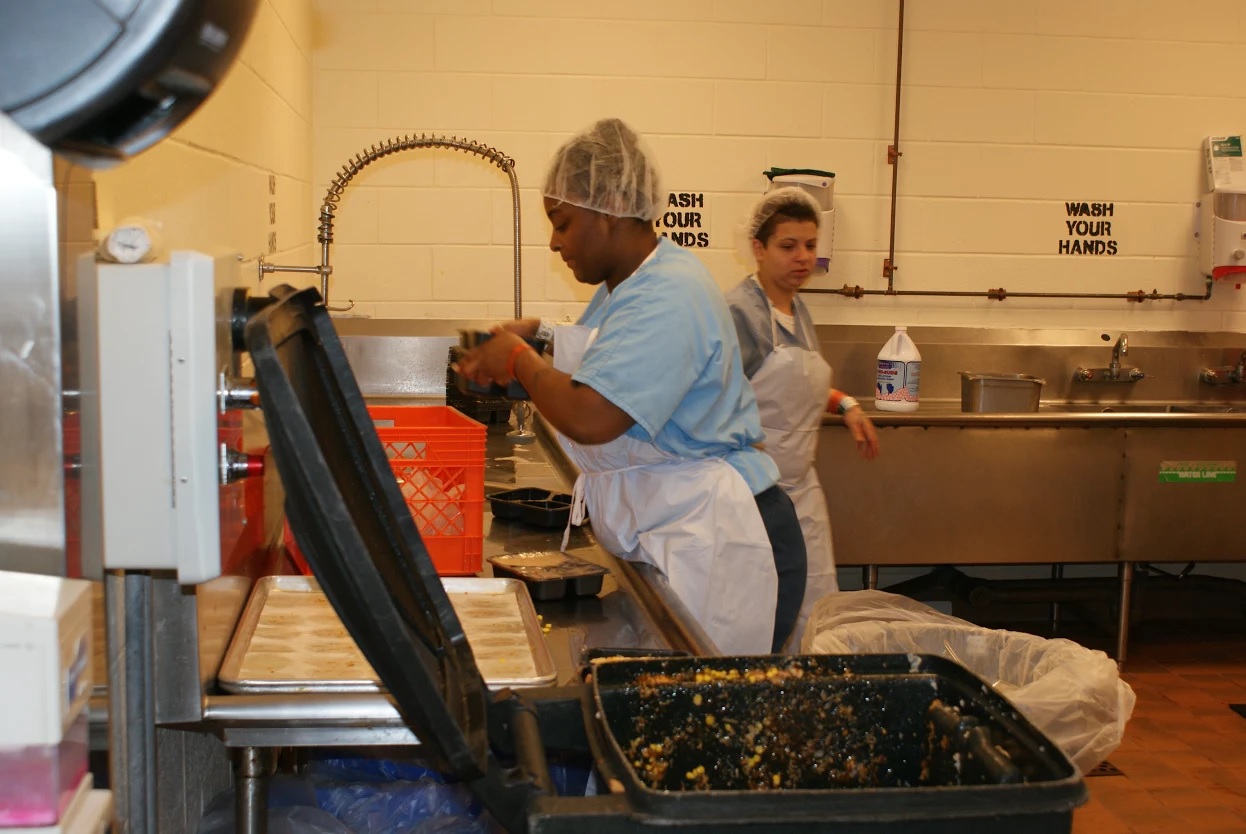
The company has three sites, and the closest to Philadelphia is in Royersford, about 35 miles away. They collect organics from Lincoln Financial Field and PECO’s headquarters in the city, but the transportation cost makes composting there unaffordable for many.
“I would love to build something in the city [Philadelphia],” Foley said. His engineered soils are used for green stormwater management; being able to manufacture them in the city would help the Green City, Clean Water plan reduce costs, he said.
The biggest challenge to open a large-scale composting facility, he said, is finding a site with existing infrastructure, because building one from scratch can take between three and five years.
Organic Diversion, LLC has been collecting organics from restaurants, supermarkets, hospitals and universities in Philadelphia since 2009. By the end of the year, the company will open a food waste to energy facility in Gloucester City, New Jersey. Rocco D’Antonio, the company’s CEO, said there’s still a lot of room for composting businesses in Philadelphia. “We are only scratching the surface,” he said.
D’Antonio would also be happy to open another facility in Philadelphia if the city is willing to assist in the development through legislation and financing.
“Dumpster regulation hasn’t helped this business a lot because there’s very little enforcement,” D’Antonio said.
Bennett Compost, one of the three composting companies in the city (the other two are Philly Compost and Circle Compost), collects food waste from 1,500 households and 40 restaurants. Tim Bennett, the company’s founder, said he would also like to expand. There’s a lot of enthusiasm for composting, he said, but the infrastructure hasn’t caught up.
One of the reasons he mentions is the lack of permits for midsize urban composting facilities. Homeowners have the right to compost in their backyards, and the Department of Environmental Protection regulates municipality and on-farm composting, but not commercial composting in the city.
“Right now, that’s our biggest barrier to expanding,” Bennett said. “Without a license, we can’t get loans or raise money. Until regulations are in place, we are on hold.”
Nic Esposito, the city’s zero waste and litter director, said states like New York and California have created permits for urban composting, but until now, there hasn’t been a need in Pennsylvania.
“That’s something that we need to do in Pennsylvania, and it would be amazing if Philadelphia could lead in that,” Esposito said. “Creating the right conditions to attract composting facilities in Philadelphia is something that we need to look at.”
Middle scale compost facilities, which serve couple hundreds of households, can be a great complementary solution. But Seth Budick from the Dirt Factory, a community composting facility for University City that serves around 200 customers, said there’s another barrier for creating more of them: Earth tub composters, or other middle-scale devices can cost around $10,000.
“We would love to open another facility as the one we already own, but honestly the cost of doing it is prohibitive if you are relying on something like that,” Budick said.
That inspired the Philadelphia Food Policy Advisory Council (FPAC) to create a compost bin design competition hoping someone could create a more affordable device. The winner will get $500, plus the materials to build it and send it to Philadelphia.
“We recognize the need for multiple scales of composting in Philadelphia, from the backyard composting scale to the large commercial industry, but we’re hoping that this medium scale can help build that infrastructure in Philadelphia,” said Hannah Chatterjee, FPAC manager. “We need all three to get to zero waste.”
Linda Knapp, chair of the zero waste subcommittee at FPAC, says New York City is an excellent model because they started doing food collection in the 1990s at a small scale, actively promoting backyard and community composting to their citizens. Today, the big Apple has compost drop-off sites, educational programs, and a pilot curbside collection program.
For Budick, medium-scale composting not only serves as a transition but also keeps the compost in local community gardens and yards.
Esposito says cities like Minneapolis and San Francisco also started with smaller scale programs first, which led to curbside pickup programs.
“I would like to find a solution that is not a one-size-fits-all solution,” Esposito said. “As much as we promote organic collection, I would love that people would still have backyard composting on their property and create their own fertilizer. Our mission, ultimately, is connecting people back to their waste.”
For Esposito, the most sustainable food waste management is not wasting food in the first place and being more mindful. He thinks the planning process happening from now until next July is full of opportunities.
“This is a huge lift,” Esposito said. “This isn’t like a singular specific issue, this is remaking our entire waste structure. It’s huge! If we don’t work together, we can’t get this done.”
WHYY is your source for fact-based, in-depth journalism and information. As a nonprofit organization, we rely on financial support from readers like you. Please give today.



